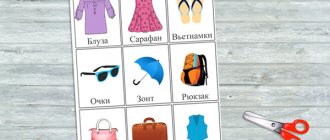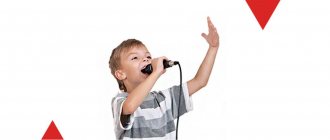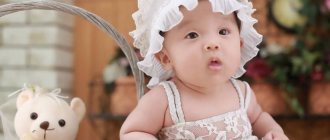To achieve commercial success in poultry breeding, you need to understand the physiological characteristics of the chosen species. The anatomy of a chicken will tell an attentive farmer: how to raise a healthy chicken, what signs indicate the presence of diseases. And also how to competently slaughter and process a carcass. Such knowledge is never superfluous. Let's consider a detailed description of the external and internal structure of chickens.
This is interesting
The solid basis of a bird's body is cartilage and bones. They are connected to each other by ligaments, forming a single chicken skeleton. His bones are hollow inside. Thanks to this, the body has a margin of safety and weighs little.
Such characteristics predispose the chicken to flight, but it rarely does so.
The structure of the chicken has the following features:
- the skin does not contain sebaceous glands;
- the mouth has no teeth;
- the large intestine is short, which is why food is digested 50 times faster than in humans;
- no bladder;
- there is a coccygeal gland, a crop and a carina of the sternum.
Distinctive features of birds
Photo of the chicken structure:
Poultry is divided into keeled and ratite representatives. Chickens are classified as ratites. In their anatomical structure they are close to reptiles, but due to their ability to fly and think, they are distinguished by a number of unique characteristics.
The main distinctive features of birds:
- lack of teeth;
- the presence of a horny sheath on the jaws, forming a beak;
- ability to lay eggs;
- dry skin;
- presence of plumage;
- demonstrative zygomatic orthodrome;
- mobility of the quadrate bone;
- ribs with hook-shaped processes;
- metatarsal commissure of the pelvic bones;
- highly organized brain;
- streamlined contours;
- uneven arrangement of muscles that ensure movement and flight;
- the insides are shifted closer to the center of gravity of the body;
- the intestine is shortened, but the secretory functions of the gastrointestinal tract remain at a high level.
Skeletal structure
About the bones
A chicken weighs on average about 2.5 kg, and a rooster weighs up to 4.5 kg. 10% of the total mass is bones. In chickens - 17-18%. Bone material grows on average 130 days.
By 3 months the birds reach maturity. In laying hens, a medullary bone is formed, which is involved in the process of shell formation.
Minerals and salts necessary for the life of chickens are stored in their bones. The supply is replenished through food.
The bones act as levers for the chicken's movements and as protection for its internal organs.
On the outside, the bone is covered with a special film - periosteum. It allows it to grow in thickness.
Types of skeleton
Peripheral, consisting of the shoulder and pelvic girdles and limbs of chickens
Axial, which includes 5 sections: cervical, thoracic, lumbar, sacral and caudal.
Let's take a closer look.
Peripheral
Basics
The pelvic and shoulder girdles attach the limbs and wings to the chicken's body.
The coracoid bone, scapula and clavicle are part of the shoulder girdle. They connect the wing to the body and ensure its mobility.
The wing consists of the following bones:
- humerus, forming the shoulder and connecting to the coracoid bone;
- forearms: ulnar and less developed radius, which is a support for the flight feathers;
- wrist (2 bones), which helps the chicken’s wings bend during movement by attaching tendons to them.
The skeleton of the pelvic girdle contains the innominate bone. It is formed by the fusion of the pubic, ischial and iliac bones. The last two connect to the lumbosacral region of the chicken.
The pubic bones are highly elastic and move apart when the eggs are laid. The medullary bone is also located here.
Paws
The lower limbs consist of: the femur with a trochanter, the tibia, two metatarsal bones, and four fingers. A process called a spur sometimes extends from the metatarsus. Mainly in cockerels.
The tubular bones of the lower extremities are connected to the pelvis with the help of joints and tendons. Read more in the article “Paws or legs: the structure of the limbs of a chicken.”
Axial
Head and neck
The axial section consists of the head, neck, body and tail.
The chicken head consists of 2 parts.
Brain: represents the cranium. It is formed from the sphenoid, ethmoid, parietal, frontal and temporal bones. And also from the ear holes. Inside there are 2 cavities: for the brain and the cerebellum. Now you know if a chicken has a brain.
Facial: smaller in size, but with more bones. The main part has fused together, forming a fixed beak. It, together with the jaw without teeth, is attached to the brain.
The neck of chickens is powerful, long, and mobile. Participates in obtaining food and caring for plumage. The basis of the department is made up of movable cervical vertebrae. There are 13-14 of them in total, depending on the type of bird.
Other departments
The thoracic, abdominal and pelvic sections make up the body of a chicken.
The thoracic region (or cage) consists of the main breast bone, 7 movable vertebrae and 14 ribs. Almost all the vertebrae are fused together, except for 1 and 7.
The internal organs of the chicken are reliably protected by the chest. The main bone has a keel. With a deficiency of mineral elements, it begins to bend.
The abdominal region is the only part of the chicken's body that does not have bones.
The pelvic region is the dorsal region. There are 11-14 vertebrae here. But already in chickens they grow together with each other, as well as with 7 pectoral and 1 caudal bones, which become like one large bone - the lumbosacral bone.
The tail of a chicken consists of 5-6 movable vertebrae.
Drawing tools
A cockerel (a drawing for children can be done simply if you follow step-by-step instructions) can decorate not only in reality, but also on paper. However, before you start drawing it, you need to find everything you need for this.
Pencil
The main drawing tool will be a simple pencil. With its help, contours will be created.
For work, it is better to take not 1, but at least 2 pencils:
- The 1st one should be hard. It will be used for sketches;
- 2nd, soft – will be needed for applying shadows.
For contours, it is recommended to take a pencil marked 2H (or 2T, if it is made in Russia). It is most convenient to work with shadows with a hard-soft pencil marked HB (or TM, if it is domestic).
Eraser
When drawing, extra lines will inevitably appear that will need to be removed. In many works, artists deliberately create such lines to simplify the drawing process. Lines are used to mark the paper sheet and initial sketches are made. Such lines, which are created intentionally, are removed as they fulfill their role. They are called auxiliary.
An eraser is used to remove lines. It is recommended to take an elastic band whose different sides differ in stiffness: one side should be stiffer than the other. In this case, it will be possible to remove pencil lines of different intensities.
Pen
It is recommended to outline the final contours to make them clearer. In addition, the handle is convenient for working with small parts. It is best to purchase a black gel pen, a black marker (or felt-tip pen), you will need a black marker to trace the outline of the drawing. This can also be done with a black felt-tip pen.
Coloring Tools
You can color a drawing made with a pencil, pen and black marker using any materials and tools intended for this purpose. The main thing is that the process brings pleasure, and the picture turns out beautiful in the end. For example, it will be more convenient for a child to work with felt-tip pens and colored pencils. You can also do this with wax crayons.
However, a better effect can be achieved using paints. If you decide to use paint for painting, you should also prepare brushes. It is best to purchase thin and medium brushes with soft bristles. The color of felt-tip pens and paints depends on what technique will be used to create the drawings.
Paper
For pencil drawings, a regular sheet of paper from a sketchbook will do. If paints are used in the work, you will need thicker paper that absorbs water well.
External structure
Feathers
Chickens do not have belly buttons or teeth. But there are other features.
For example, feathers are keratinized cells growing from the recesses of the skin. Purposes of feathers:
- help to fly;
- keep warm in winter;
- prevents overheating in summer;
- protect from bad weather;
- allow you to attract the opposite sex.
Changes in plumage (molting) in chickens occur annually, usually in the fall. Lasts 2-3 months. A new feather is formed in the follicle. Making its way out, it pushes out the old.
Leather
The main function of the skin is protective. Prevent foreign bodies from entering the internal system. In addition, it is involved in thermoregulation and metabolic processes. Allows you to feel cold, warmth, pleasure, pain.
There are several varieties of chicken skin.
Feathered: needed for the development of feathers that form from skin follicles.
Scaly: covers the legs of chickens. Consists of keratinized convex scales.
Claws and beak: keratinized epithelium consisting of hard keratin cells. There are no teeth in the beak.
Foot: The tough, thick but flexible span of skin on the leg.
Beard and comb: appear during puberty.
The skin of chickens is devoid of glands, with the exception of the coccygeal gland. It is located near the tail. Birds independently lubricate their feathers with a secretion secreted from the gland. This makes the plumage wear-resistant.
Eyes
The structure of the eyes allows chickens to look up and down at the same time. A wide range of vision is possible due to the location of the eyes on the sides of the head.
But this structure provides chickens with “blind spots”. It is difficult for them to see anything in front of them. Therefore, they peck in the place they remember.
A chicken's eyes take up 15% of its total body weight. In humans, for example, this organ occupies only 1%.
The eyeball is not round, but flattened. An anatomical section will show us the usual lens, cornea and retina. The latter is not human-like. Photoreceptors located there help chickens see in color day and night. In addition, a larger number of bones allows you to focus your gaze faster.
Chickens close their eyes with three eyelids: lower, upper and nictitating film.
Crest
It is a fleshy formation on the head, formed from skin tissue. This is a secondary sign of gender.
The intensity of the color and the size of the comb directly depends on the level of sex hormones. It comes in all sorts of forms. The article “Secrets of the Cockscomb” will tell you about this.
Ears
Chickens have excellent hearing. And all thanks to the ears. But unlike humans, they do not have shells.
Now you know whether chickens have ears and what they are like.
Features of feathers and skin
The outer layer of the dermis is thin. Underneath it is the Malpighian layer, consisting of cylindrical cells that are distinguished by their ability to reproduce their own kind.
A characteristic feature of the epidermis of chickens is the ability to form feathers. True skin is hidden by the epidermis. It consists of subepithelial and loose layers. The first contains the skin muscles that provide movement of the feathers.
Fatty deposits accumulate in the loose layer, the thickness of which depends on seasonality and nutrition. Fat is a reserve structure of the body from which the bird draws energy during periods of increased activity.
The skin contains nerve processes and tactile canaliculi, which are highly sensitive, especially in areas free from feathers. The pigment that is responsible for the color of the skin and feathers is concentrated in the epidermis and feathers. May be a derivative of melanin or keratinoids.
Feathers play a protective role for the epidermis and are involved in coordinating the movements of the musculoskeletal system.
Internal systems
Digestive
Food is captured through the beak, using the horny teeth of the palate and tongue. Then it moves into the oral cavity. Here the food is not processed in any way. This process starts in the stomach, where food enters through the esophagus.
When there is a lot of food in the stomach, it is partially pumped into the crop. As food is processed, the muscles of the crop contract and it is released.
Chickens have no teeth. Therefore, food is not chewed. It is also not processed in the oral cavity and esophagus.
Two stomachs do all the work. First, glandular, where a lot of acid and some enzymes for digestion are released. The food then enters the gizzard, where it is ground up by muscles and pebbles swallowed by the chickens.
Processed food enters the intestines, where nutrients are absorbed. Everything takes no more than 3-4 hours. Next, the remains reach the cloaca.
Respiratory
Chicken lungs are like a sponge, which is crossed by parabronchi. The latter are a thin network of channels. This is where gas exchange occurs.
In all corners of the chicken's body there are air sacs where oxygen and carbon dioxide are stored. They are connected by channels to the lungs. Thanks to this, birds have no pauses between inhalation and exhalation. Air always moves in one direction.
The air sacs fill and empty rhythmically. This respiratory system ensures the supply of air to all tissues. It also allows the lungs not to stretch.
Nervous
Consists of the brain and nerve receptors. The latter are located in various sense organs.
When interacting with the environment, nerve receptors (or endings) experience irritation, causing a reflex. It can be unconditional and conditional. The difference between them is that the first is innate. For example, sexual. And the second is acquired during the life of the chicken.
The reflex that appears may disappear over time, as it is not permanent. Under the influence of new nervous reactions, the bird adapts to changes in the environment.
Interesting information is contained in the article “Why a chicken can run without a head.”
excretory
Designed to remove from the body decay products formed during the life of birds. For example, when digesting food. Consists of ureters, tubules and kidneys. Chickens do not have a bladder.
Scheme of how the system works: blood passing through the vessels gives off excess fluid. And along with it, harmful substances. All this enters the renal section through the ureters, where it is cleaned and the unnecessary is given away. Urine flows out of the cloaca through the tubules.
The liquid processed in this way is not stored in the chicken’s body. Urine contains nitrogen crystals (up to 80%). When hatched, they turn into a whitish mushy mass. In addition to the kidneys, the liver and stomach cleanse the blood.
Blood
Almost no different in structure from similar mammalian systems. In chickens, the heart also works as a pump to pump blood. The latter saturates the tissues with various nutrients, removing decay products.
The only difference is that the left side of the chickens’ heart is larger than the right. She has to work harder.
Blood volume accounts for up to 9% of the total weight of the bird. When it is slaughtered, about half comes out, and the rest remains in the tissues.
The circulatory system is also responsible for maintaining a constant body temperature of the chicken, determines the chemical composition of its blood, and distributes useful substances.
Sexual
In chickens, only the left ovary and oviduct work. Mature eggs travel from the ovary to the cloaca, emerging as a formed egg. The process is described in more detail in the article “How chickens lay eggs.”
Males have two ovaries that produce sperm. The main function of their system is the fertilization of eggs during mating. A full description is given in the article “Structure of the reproductive system of the rooster.”
If you found this article useful, please rate it 5 stars. Special thanks for the repost. Comments are open to discuss the topic.
Cutting up chickens for food
Actions:
- Neck . Cut the skin, twist the neck with your hand.
- The wings are separated at the joint between the wing and the carcass.
- The tibia is separated from the thigh at the joint.
- Hip . Cut the flesh, pull the thigh until the bone comes out, cut the cartilage.
- The paws are cut off at the junction with the drumstick.
- The stomach is removed with the liver and spleen, and they are carefully separated.
- The breast is cut along the border of the breast and back along the fat strip.
- Giblets : the heart and lungs are freed from arteries and fat, the liver - from the spleen, the stomach - from contents.
- The back remains after cutting off the breast and thighs.








